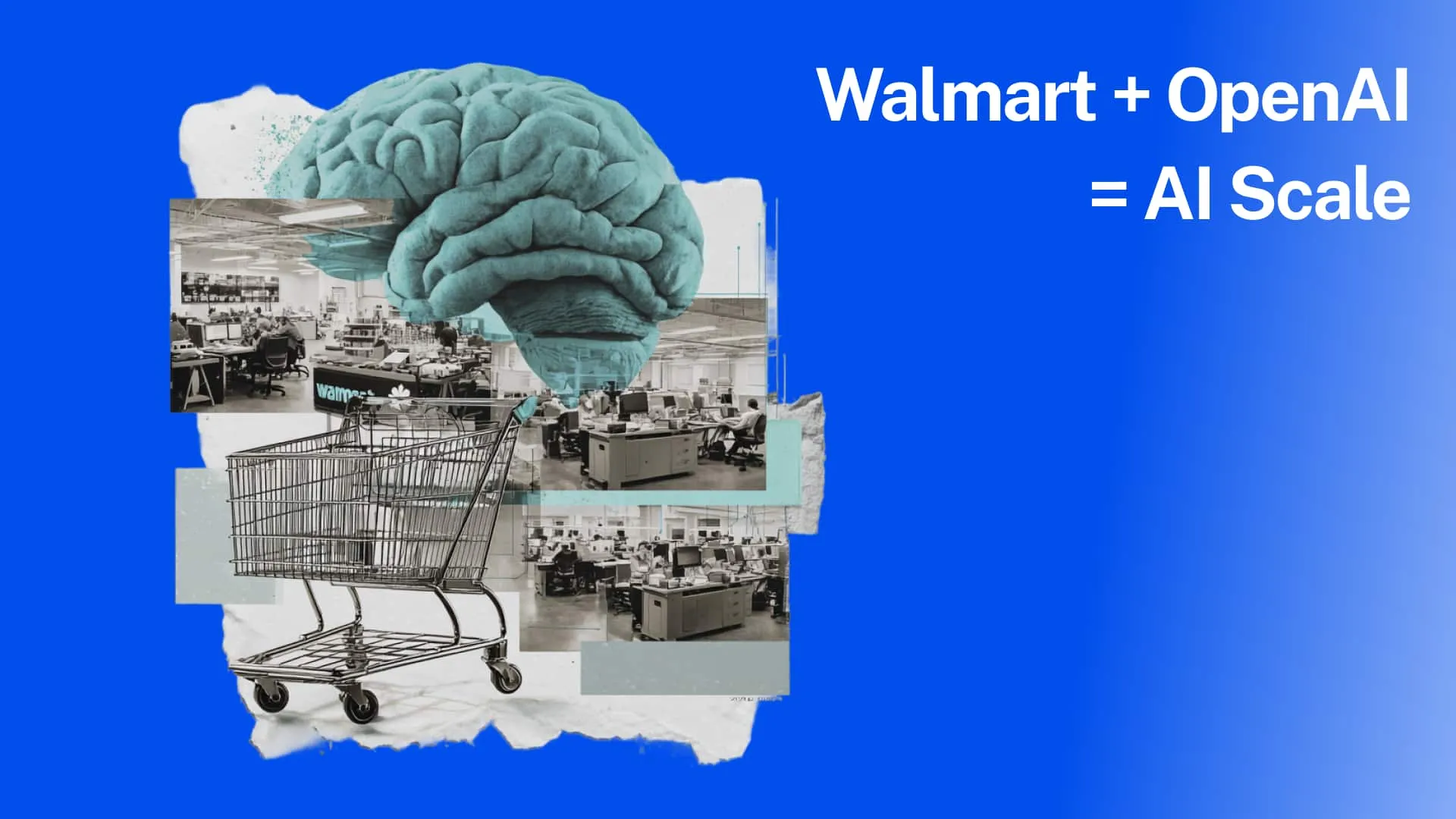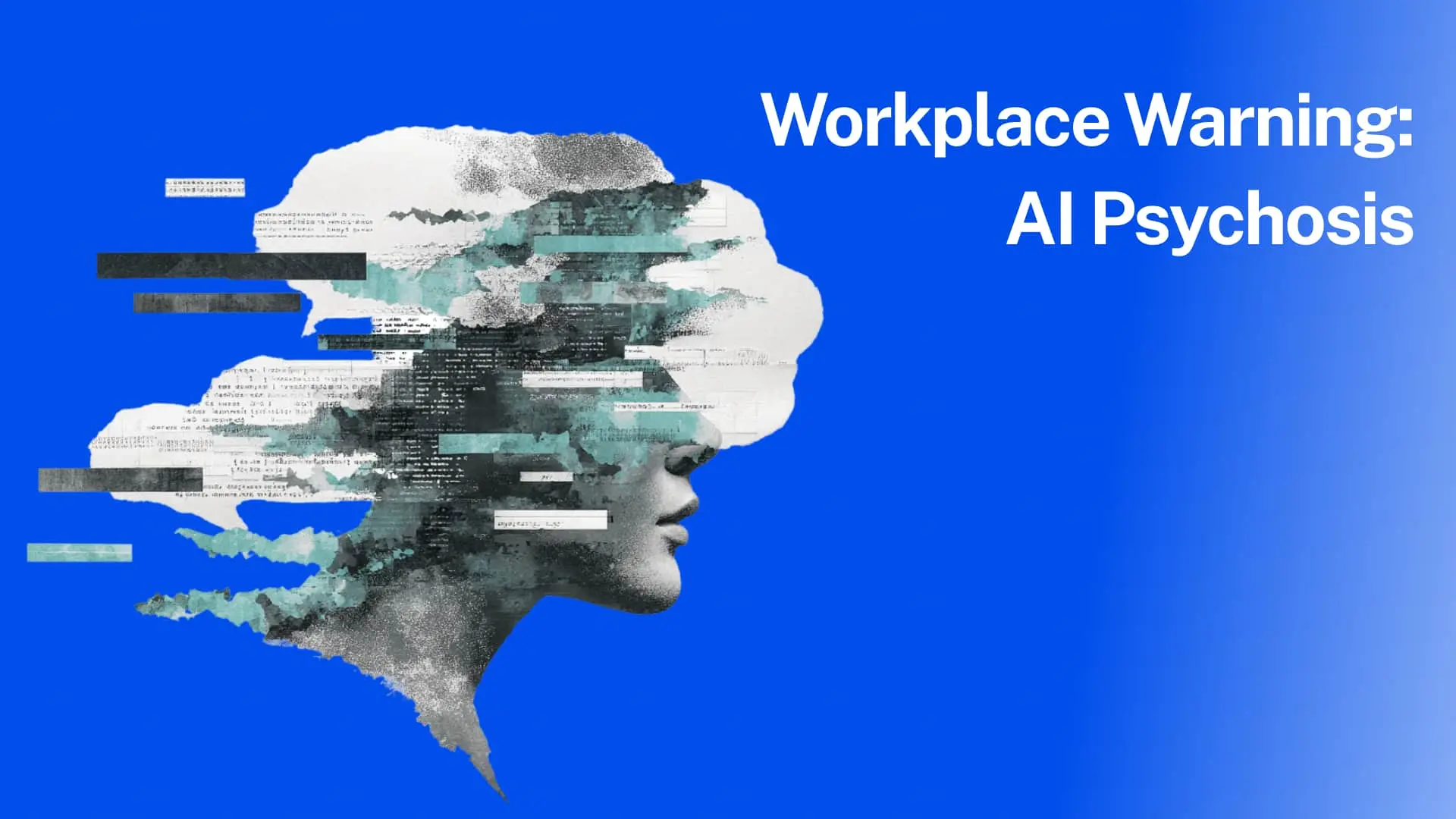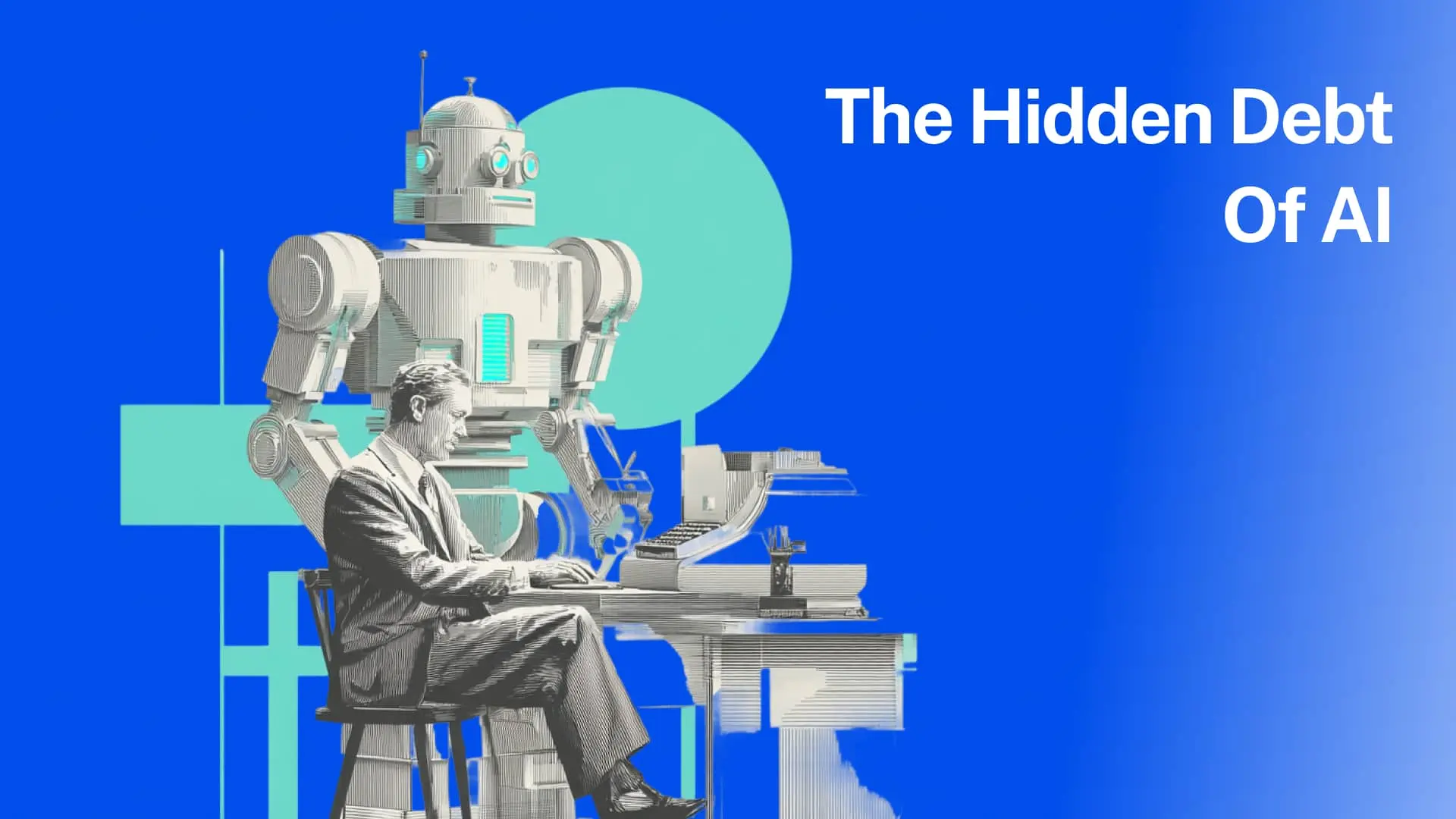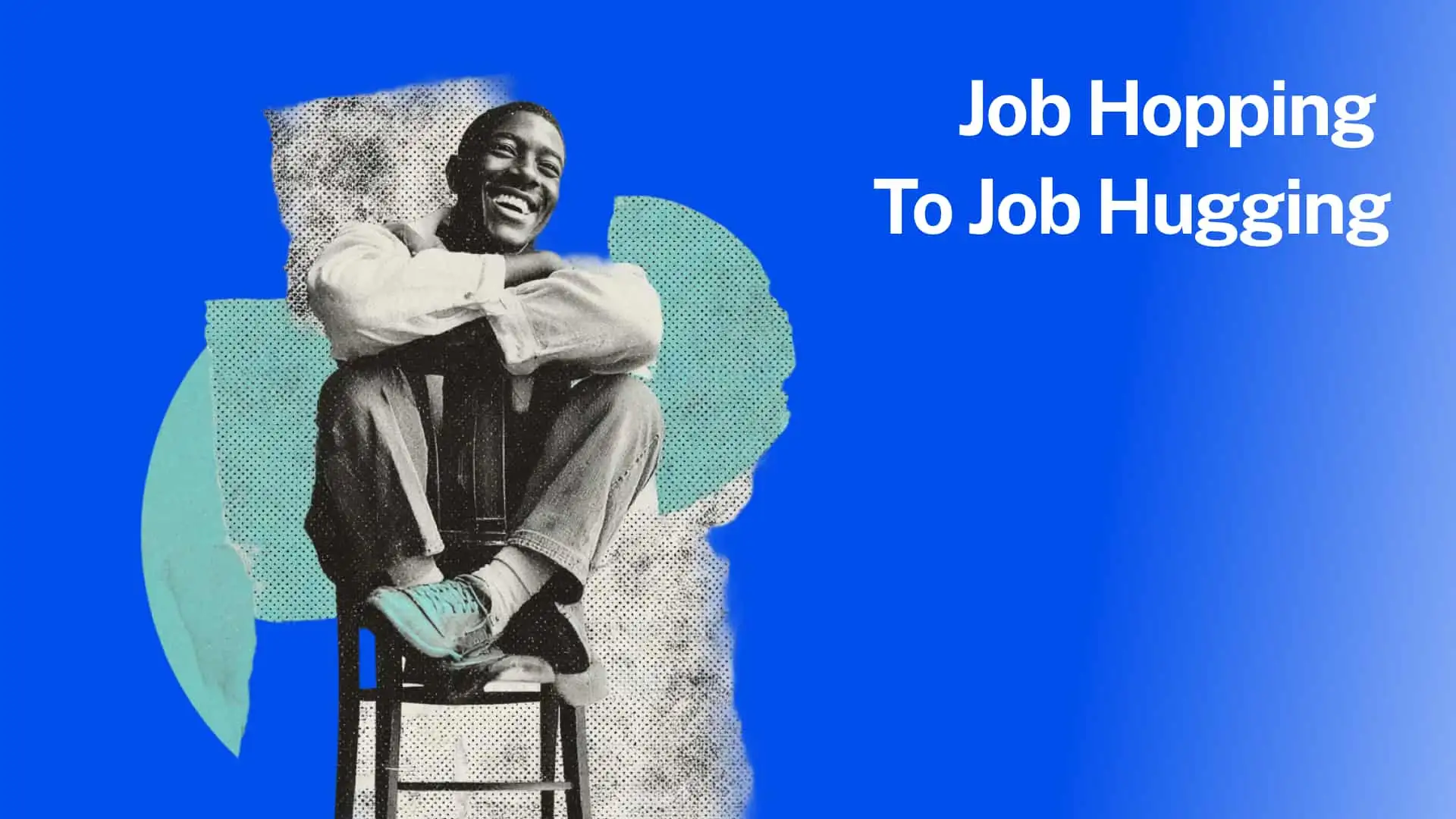As I wrote about AI in Management last week, the advances in AI are coming at us at a dizzying pace, making it clear that work will never be the same again.
(Note: AI is developing rapidly. Take a look at our six must-know AI trends in 2024.)
In our recent "Help I'm a Hybrid Manager" webinar, attendees' questions were highly focused on employee productivity for their hybrid and remote teams.
And even though the benefits of remote work have been proven repeatedly, the media reported on OpenAI's CEO Sam Altman saying the "remote work 'experiment' was a mistake."
Could AI play a role in solving this issue? A fascinating podcast and article I read this week say yes.
Let's dive in.
A simple way to understand Generative AI
First, a quick refresher on Generative AI. Generative AI (tools like ChatGPT, Midjourney, etcetera) differs from previous AI models because openAI and others trained it on almost all data in the world and can process it much faster.
Because it has processed all data known to humanity, it can accurately predict the next word in a sentence. The platforms then applied human reinforcement to make the results even better, to make it think more like a human.
So while it may look like writing stories and answering questions, it's just an 'autocomplete' for text, images, and more. Of course, doing that at scale is incredibly impressive. And that makes the tools so powerful.

AI & Productivity
In "How Generative AI Changes Productivity," Amy Bernstein discusses how this type of AI will increase productivity with Harvard Business School professor Karim Lakhani.
Although IBM's CEO vowed to replace 8,000 jobs with AI, Karim reassures us that AI won't replace humans. As scientists have predicted, machines won't replace humans. But people with machines will replace people without machines.
The way Microsoft calls its AI tool "Co-Pilot" is actually an apt description of the role of AI. We will have a co-pilot who knows everything, but you're still in charge, just like a real captain. You'll need to manage what it comes up with and how to apply it.
Who will benefit the most from AI?
People initially thought people with low skills would be hurt the most. The opposite may be true, as shown in studies about writing and call center workers.
In the latter study, ChatGPT gave customer representatives "real-time suggestions" on handling customer interactions. The AI partially did this by comparing what was said in successful calls versus unsuccessful ones and optimized phone scripts based on what it learned.
While using ChatGPT in this way drove an average productivity increase of 14%, the study found that lower-skilled agents felt those gains the most.
Erik Brynjolfsson, the Stanford professor responsible for the research, explains why:
"What's happening is that the system is capturing the knowledge of high-skill workers and making it available to the less-experienced workers, and that's bringing them up. As you can imagine, it doesn't help the high-skill workers because that's what they already knew."
In short, people could become as good as the AI makes them, which lifts lower-skilled people rather than supercharging already high-skilled people.
How will AI drive productivity?
Karim gives an example of how the effectiveness of his teaching will improve because of AI. Rather than preparing material and bringing it to the classroom, Karim put it in ChatGPT and asked it to act like a student and respond with five intelligent questions.
He could punch up his work with these questions, making the classroom session more effective. He also mentions a journal article he has to write, where ChatGPT helps him with editing that would have taken weeks to do with a human.
So how to use AI? Actually, many other workstreams in most companies can be supported by AI, like customer service calls, administrative tasks, and training.
Taking customer service calls
AI in the Workplace can take customer service calls, as highlighted above. But, more importantly, you can feed AI your entire manual of responding to customers and remove the first-line helpdesk altogether.
Let AI, as a chatbot, handle the most common questions before a human gets involved in solving real challenges.
Streamlining administrative tasks
A busy manager can let an AI summarize meeting notes and write a list of OKRs or to-dos. (I love Fireflies for this.)
An accountant can input big spreadsheets into AI and ask it to analyze them for them. The AI can also spot mislabeled and fix the issue.
A legal assistant can cut their research time from hours or days of work to find the right case law to minutes because ChatGPT has already read every case worldwide.
Scheduling
Instead of sending a Doodle poll to let participants select a suitable timeslot, AI can look at the data and everyone's calendars and suggest possible timeslots. Using AI to consider all variables can save time and reduce the headache of scheduling conflicts.
Training employees
As a manager, I can share with ChatGPT what kind of team I want and what talent currently exists in my team and company. I can then ask what skills they need and whether they already exist. This talent mapping is something HR used to do through thousands of hours of work.
Defining productivity
One important thing to note is that the definition of productivity is highly ambiguous. New research shows that the problem lies in differing opinions between employees and managers.
A survey from ClickUp found that 56% of US knowledge workers see themselves as productive when they feel accomplished, which is unlikely to be their manager's measure of productivity. Only a third described it as "moving tasks forward efficiently without roadblocks," and 28% said it's "working very hard for results."
Workers judge themselves based on their feelings, while they judge colleagues based on output, success, and time management. This skewed view affects how managers view their team's productivity.

How do we get started with AI?
Karim warns us against bolting on AI rather than rethinking the way we work more holistically. The opportunity is for executives not to be happy with a few productivity bumps but transform their working models, like many digitally-born companies like Shein.
Recent research shows that 30% of employees face the risk of attrition due to ongoing over- and underutilization. Leaders should consider what people will do now that AI will take over their more mundane work, like how bank tellers became advisors. AI offers the opportunity to make jobs more meaningful and let people genuinely serve the company's mission.
For leaders, this means understanding the potential of AI. Managers can use tens of AI tools today to work smarter, not harder. (Read: AI in Management.) Co-Pilot will be integrated into the entire Office Suit, from Outlook to Powerpoint.
Then, they should get their teams to embrace AI. Investor Jason Calacanis said in a recent podcast that he made ChatGPT the default homepage of his team. Find ways for team members to quickly benefit and offload menial tasks on the way to more meaningful productivity.
The beautiful relationship between Remote Work and AI
In his fantastic piece "AI and Remote Work: A Match Made in Heaven," Dror Poleg writes that Remote Work and AI have a symbiotic relationship.
"The shift towards remote and hybrid work models has opened doors for AI-driven chatbots and virtual assistants to join the workforce. AI, in turn, enhances remote collaboration by improving communication tools and incentivizing humans to rely even more heavily on digital communication and modular work."
As more people work remotely, work becomes asynchronous, modular, output-based, and digitized. These changes create the perfect environment for AI to join: the recently announced GPT Slack Bot that summarizes conversations you've missed wouldn't work if we were talking face-to-face in an office.
Dror continues:
"With AI's help, we can expect online collaboration tools to become real good, real fast. As a result, more people and organizations embrace remote and hybrid work for more tasks."
He believes that chatbots and other AI agents will become integral parts of the workflow in many industries. To enable these agents to participate and contribute, our work must happen through digital channels, which further fuels the remote <-> AI flywheel.

AI and Remote Work can make us more productive.
It's clear to me that AI and remote work go hand in hand, and that they can even help deliver more meaningful productivity. In short:
- Generative AI can increase productivity for remote and hybrid teams by taking over tasks and leveling up lower performers.
- AI will work alongside humans, much like a co-pilot. Therefore, it's crucial to manage what AI comes up with and how to apply it.
- Defining productivity remains ambiguous, with differing opinions between employees and managers. It's essential to set clear goals and measures of success.
- Because work is becoming more digital, AI can be easily applied to all we do, meaning more opportunities for optimizing workflows.
- Leaders need to understand AI better, start embedding it into their workstreams, and encourage their teams to do so too.
For more on (getting started with) AI, check out my other articles:
- Overview: AI in the Workplace
- AI in Management: How AI will change the way we manage (+37 tools to try)
- 6 AI Recruiting Tools for Smart and Effective Hiring
- Best AI Accounting Tools for Improved Accuracy and Efficiency in 2024
- Best AI Presentation Generators
- 10 AI Marketing Tools to Streamline Your Marketing Workflow
- The 10 best AI Productivity Tools to work smarter, not harder (some of my favorites)
- Our top 10 Free AI Websites to Work Smarter and Faster in 2024 (for common tasks)
- Barriers to AI adoption: Why are certain companies so slow to adopt AI?
- Women and AI: Why the data shows women are at risk of falling behind.
- From Coders to Writers: An honest look at jobs AI will replace
- 18 Ways On How To Use AI at Work in 2024 (+39 Tools Reviewed)
- Use our Prompt Generator to create 10x more powerful prompts and see more value from your ChatGPT usage.
- And another 7 Free AI Tools to Make Your Life 10x Easier
Let's get going.











